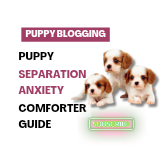Teaching Your Dog Essential Commands for a Well-Behaved Companion
- Sep 3, 2021
- 3 min read
Updated: Feb 20
Embarking on the journey of training your dog is a rewarding endeavor that lays the foundation for a strong bond and a well-behaved furry friend. In this post, we'll explore some fundamental dog commands and provide tips on how to teach them effectively, making the training process enjoyable for both you and your canine companion.

Yes: The "yes" cue or a clicker can be used to pinpoint the behaviour required. Teach yes initially by saying a short and excited "yes" and then offering a treat. This is using the Pavlov's dog idea that dogs saliva after a stimulus. The word must be said first and then a second later, give the treat. Not together, or the link is not made.
Sit: The "sit" command is a fundamental cue that every dog should master. To teach your dog to sit, hold a treat close to their nose, then slowly raise your hand above their head. As their nose follows the treat, their bottom should naturally lower to the ground. Immediately as their bottom hits the ground, say "yes" reward them with the treat and praise.
Stay: Teaching your dog to "stay" is essential for safety. Start with your dog in a sitting position, then hold your palm out in front of them, saying "stay." Take a step back, if they remain in place, say "yes", step towards them, reward them, and gradually increase the distance. Be sure to use a release word like "free" when it's time for them to move.
Come: The "come" command is vital for recall. Begin in a low-distraction environment, call your dog's name followed by "come," and encourage them to approach you. When they come, say "yes", reward them with a treat and lots of praise. Make it a positive experience, so your dog associates coming to you with something enjoyable.
Down (Lie Down): To teach your dog to lie down on command, start with them in a sitting position. Hold a treat near their nose, lower it to the ground, and move it away from them. As your dog follows the treat, their body should naturally lower to the ground. Say "yes" and reward them when they are fully down.
Leave It: "Leave it" is a crucial command to prevent your dog from picking up potentially harmful items. Hold a treat in your closed fist, and let your dog sniff and paw at it. Say "leave it" and wait for them to lose interest. Once they do, say "yes" reward them with a different treat from your other hand.
Drop It: Teaching your dog to "drop it" is essential when playing fetch or preventing them from holding onto something they shouldn't. Offer a toy or object to your dog and say "drop it." When they release it, say "yes", reward them with a treat and positive reinforcement.
Heel: "Heel" is valuable for walking your dog without pulling. Start with your dog on your left side, say "heel," and start walking. Keep treats close to their nose, say "yes" and reward them for walking nicely by your side. Consistency is key in reinforcing this behaviour.
Wait: "Wait" is useful for controlling your dog's movement without requiring them to stay in one place. Use "wait" when approaching doors or crossing streets. Simply ask your dog to wait, then say "yes" reward and praise when they comply. Note, if you are using the "free" the wait is implied until you say "free".
Tips for Effective Training:
Keep training sessions short and positive to maintain your dog's interest and enthusiasm.
Use high-value treats to motivate your dog during training.
Consistency is crucial; use the same cues before the reward and reward each time.
Positive reinforcement, such as treats and praise, is more effective than punishment.
Once they have learned the behaviour in a quiet, controlled environment, practice commands in various environments to generalise the learning.
Training your dog basic commands not only enhances their behavior but also strengthens the bond between you. Be patient, stay positive, and celebrate small victories along the way. With time and consistent effort, you and your furry friend will master these essential commands, creating a happier and more harmonious life together.











Comments